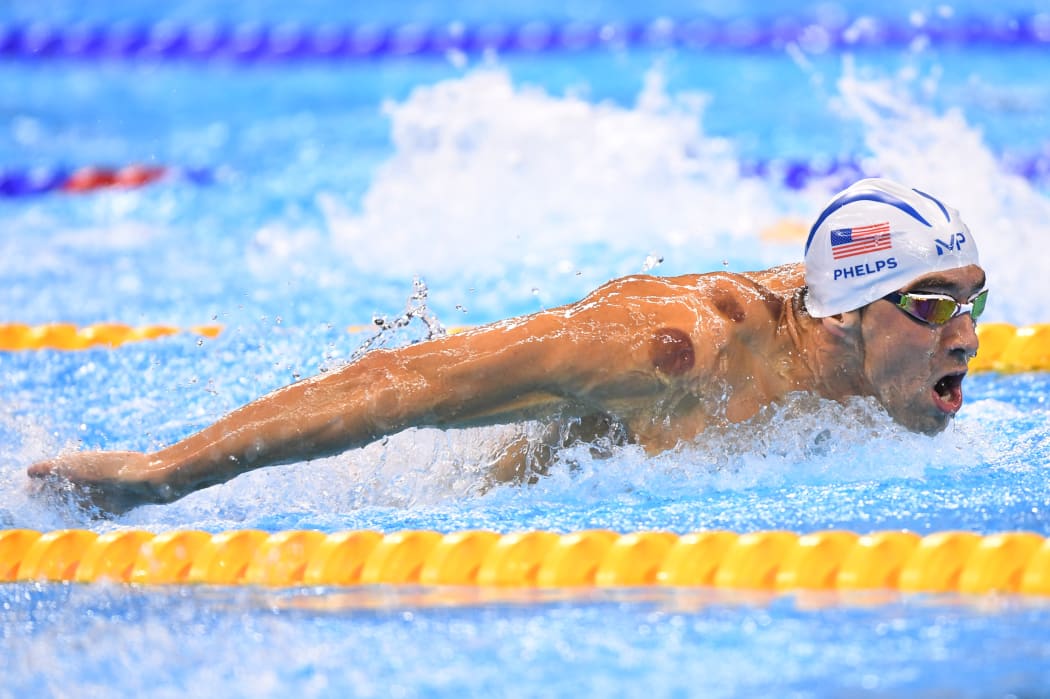Michael Phelps is the most decorated Olympic athlete of all time - but these days he's also decorated with large red dots.
The mark of an Olympic athlete, at least at Rio 2016, seems to be a scattering of perfectly round bruises.
Swimmers and gymnasts, particularly from Team USA, are among those who have been photographed sporting the mysterious dots - the result of a practice known as 'cupping'.

19-times Olympic gold medallist Michael Phelps could be seen sporting cupping marks during the men's 200m butterfly heats. Photo: AFP
The technique, which is a form of acupuncture, is done by lighting flammable liquid in a glass cup.
Once the flame goes out, the drop in temperature creates suction which sticks the cups to the body.
The suction pulls the skin away from the body and promotes blood flow - and leaves those red spots, which typically last for three or four days.
Athletes asked about it said they were using cupping to ease aches and pains, and to help with recovery from the physical toil of constant training and competing.
There are plenty of other recovery techniques competitors use - including sports massage, sauna, ice baths and compression garments - but US gymnast Alex Naddour told USA Today that cupping was "better than any money I've spent on anything else".
"That's been the secret that I have had through this year that keeps me healthy," Naddour said.
His team captain Chris Brooks added that many on the squad had started 'do-it-yourself' cupping, with cups that could be suctioned with a pump rather than with a flame.
Belarusian swimmer Pavel Sankovich also posted a photo of his legs covered in a dozen of the little domes.
The British Acupuncture Council said cupping was not painful, and the red marks left on the skin were caused by blood being drawn to the surface and small capillaries rupturing.
On "rare occasions" the hot cups could cause mild burns, the Council said.
Practitioners claim cupping helps with a huge variety of ailments, including muscle problems, pain relief, arthritis, insomnia, fertility issues, and cellulite.
University of Exeter professor of complementary medicine Edzard Ernst said it was not a proven medical treatment, although there had "certainly been satisfied customers for 3,000 years".
"There is no evidence for its efficacy. It has not been submitted to clinical trials."
-BBC

